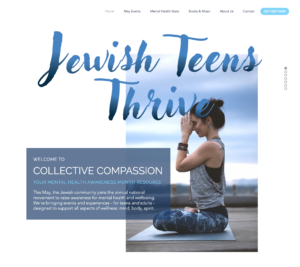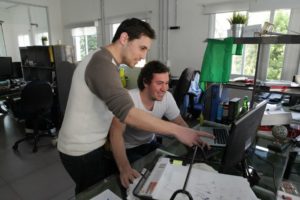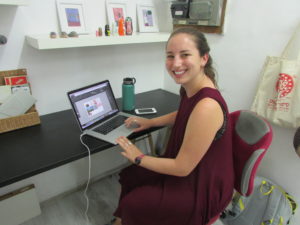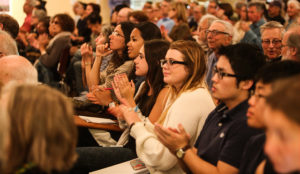This is the third piece in series in eJewish Philanthropy on the new report from CASJE, conducted by Rosov Consulting, Facing the Future: Mapping the Marketplace of Jewish Education during COVID-19 Read the first piece and second piece in the series on the growing opportunities of full-time work in Jewish education and on what educational offerings parents are prioritizing.
The recent interchange between Andrés Spokoiny and Russel Neiss about what Spokoiny called the “democratization of quality” accelerated by COVID-19 captures two competing visions of Jewish education and the role of the Jewish educator. Spokoiny was celebrating increased access to high quality educational content from anywhere in the world, often free of charge. Neiss saw another instance of misguided seduction by broadcast technology, at the expense of “empower[ing] our teachers and learners with the skills and permission to reinvision, remix and renew our tradition for themselves.”
We don’t intend to take a position in this argument. We want to underline how the perspectives articulated get to the core of one of the more confusing implications of COVID-19 for providers of Jewish education. These perspectives reflect an emerging reality where in many instances, the local and national are no longer well defined, discrete and complementary. They are experienced as competing goods, often within the same organization. This clash between these local and national goods occurs along a spectrum from the benign to the potentially malignant.
We’ve observed this continuum during the course of a major study of the career trajectories of Jewish educators led by CASJE (Consortium for Applied Studies in Jewish Education), supported by the Jim Joseph Foundation and William Davidson Foundation, and conducted by Rosov Consulting.[1] Our reflections here constitute the final installment of insights derived from a recently released interim report, Facing the Future: Mapping the Marketplace of Jewish Education during COVID-19. In this report, based on one strand of the larger CASJE study, we saw the clash between the local and the national as confronted specifically by employers. We outline here how the tension between local and national plays out in a number of sectors of Jewish education, most prominently among youth serving organizations.
The relationship between local and national has been experienced as more confluence than clash among institutions like JCCs and Hillels. Despite having to downsize or furlough their staff in some cases, individual providers with well-developed local identities are, more often than usual, drawing on content and human resources from their larger institutional networks to serve populations essentially trapped at home. The providers maintain their distinct identity while functioning as portals to broader movements.
Things get more complicated in other sectors. For congregational schools, for example, the clash is not so much local versus national, as local versus distant. If their programming now is fully online, many Directors prioritize finding the best people for this moment, wherever they are located. They’re looking for people who can both communicate via this medium and are sensitive to children’s needs at this time. In a previous piece, we noted how this resulted in downsizing staff capacity, letting local people go, and assigning more hours to the strongest educators, sometimes from further afield. These choices prompt concerns about the challenge of rebuilding teams when learners come back into the building. The urgent need now, however, is to do whatever it takes to be relevant and responsive.
For youth serving organizations (YSOs), the choices between local and national are perhaps most difficult. Youth programming depends on finding appropriate and, ideally, able advisors who are geographically proximate to the audience. At the moment, though, geography is no longer a limitation. Some of the largest YSOs, such as BBYO and NCSY, set the bar high when early in the pandemic they created national portals and apps for online resources and programming accessible for individual teens. This has meant that YSOs have been able, first, to ask themselves optimally what they want to accomplish rather than what is possible to accomplish given locally available talent. They then identify the best-qualified people – outside experts if needed – to help achieve their goals – without being limited by location. In fact, they have additional flexibility now because they don’t need to worry about staff-teen ratios in a supervisory sense when programming online. As one director put it, “we don’t have to hire new staff, we can go back to known performers.”
While these circumstances have created a moment of opportunity, some are wrestling with a series of accompanying complications. Local-level youth programming has been hit by the financial challenges of the present moment. Youth professionals were among the first staff to be let go or furloughed by congregations and by other local providers. And, when communities are reopening or seeking to reestablish personal connections among teens and between teens and near peers, there is evidence that some organizations see internships rather than rehires as a more attractive locally-based option when it comes to staffing. There is a danger that a sector that gradually professionalized in recent years will be degraded by financial pressures.
Additionally, one of the greatest strengths of YSOs has always been their ground-game, their ability to form relationships with young people and create opportunities for them to spend time with one another and shape their own experiences. These assets have been badly battered and might be hard to rebuild. At the same time, with so much programming now flowing from central sources, the quality of these offerings is much more consistent and may even be higher. Some of it is said to be exceptional. This, we believe, is the dilemma at the crux of the interchange between Spokoiny and Neiss.
On the one hand, because of their national reach, the YSOs have been able to bring exceptional new content to their participants, and at the same time they are fearful for the future of their prize assets – the local personnel who can form a direct connection with youth. The question is can they somehow hold on to both.
The pandemic has changed the rules of the youth-serving game, and those of other sectors too. These changes do not simply pose questions about staffing and capacity. The dilemmas surfaced are essentially reflective of competing visions of Jewish education. To what extent is Jewish education about the cultivation of relationships, and to what extent is it about initiation into content? The pandemic requires us to confront ultimate questions of this kind.
The multi-year research project is generously funded by the William Davidson Foundation and Jim Joseph Foundation.
Frayda Gonshor Cohen, EdD, is a Senior Project Leader at Rosov Consulting, a mission-driven company that works with funders and grantees to inform and improve Jewish education and engagement.
Alex Pomson is Principal and Managing Director at Rosov Consulting, For more information, visit RosovConsulting.com.
[1] As part of this study, we conducted interviews and focus groups during July and August of this year with 75 individuals responsible for hiring Jewish educators in a wide span of educational institutions: overnight and day camps, Hillels, day schools, congregations and afterschool programs, JCCs, and early childhood centers.

 Israel’s vibrant economy, thriving technology and innovation sectors, and multi-cultural landscape make it an ideal place for college-age students looking to have a resume-enhancing experience that builds life-skills and can help them when they enter the workforce. Because they are immersed in the Israeli workplace and society—they are placed in housing and have opportunities to tour the country—participants return home with greater knowledge, sense of connection, and engagement in Jewish life and Israel. Evaluations of participants before and after the program show that they increase their knowledge about diversity and variety in Israeli life, society, and politics; their sense of responsibility and connection to Israelis and the Jewish people; the ability to explain to others why being Jewish and engaging with Israel are important; and knowledge of Judaism, Jewish communities, and the diversity of approaches to Judaism.
Israel’s vibrant economy, thriving technology and innovation sectors, and multi-cultural landscape make it an ideal place for college-age students looking to have a resume-enhancing experience that builds life-skills and can help them when they enter the workforce. Because they are immersed in the Israeli workplace and society—they are placed in housing and have opportunities to tour the country—participants return home with greater knowledge, sense of connection, and engagement in Jewish life and Israel. Evaluations of participants before and after the program show that they increase their knowledge about diversity and variety in Israeli life, society, and politics; their sense of responsibility and connection to Israelis and the Jewish people; the ability to explain to others why being Jewish and engaging with Israel are important; and knowledge of Judaism, Jewish communities, and the diversity of approaches to Judaism.
 In recent years, the Institute hosted the annual meeting of the Association for Israel Studies, brought Israeli Supreme Court Justice Daphne Barak-Erez as The Rosalinde and Arthur Gilbert Foundation Scholar-in-Residence, sponsored courses ranging from Israeli Constitutional Law to Religion in Israel, and hosted up to five stellar visiting professors per year to teach and mentor in their areas of expertise.
In recent years, the Institute hosted the annual meeting of the Association for Israel Studies, brought Israeli Supreme Court Justice Daphne Barak-Erez as The Rosalinde and Arthur Gilbert Foundation Scholar-in-Residence, sponsored courses ranging from Israeli Constitutional Law to Religion in Israel, and hosted up to five stellar visiting professors per year to teach and mentor in their areas of expertise.
